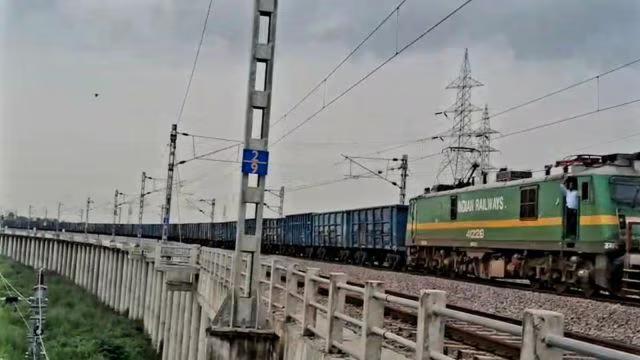
What is Known About ‘Rudrastra’, India’s Longest Freight Train?
In a remarkable feat, Indian Railways recently operated the country’s longest freight train, ‘Rudrastra’, from the Ganj Khwaja station in Uttar Pradesh to the Garhwa Road station in Jharkhand. This behemoth of a train is a staggering 4.5 kilometers long, comprising six standard rakes linked together as one unit. To put this into perspective, a standard rake is approximately 750 meters long, which means ‘Rudrastra’ is equivalent to six and a half standard rakes put together. This achievement is a testament to the ingenuity and logistical prowess of Indian Railways.
In this blog post, we will delve into the details of ‘Rudrastra’, exploring its composition, features, and the challenges faced by the railway authorities in operating such a massive train.
Composition of ‘Rudrastra’
‘Rudrastra’ is a unique train in the sense that it is not a single train with multiple coaches, but rather six standard rakes linked together to form a single unit. Each rake consists of 59 bogies, which are further divided into 345 wagons. Two engines were attached to the front of the train, while one engine was attached to each rake after every 59 bogies. This ensures that the train remains stable and can be steered efficiently.
The train is designed to transport large quantities of goods, including coal, iron ore, and other heavy materials, between the Ganj Khwaja station in Uttar Pradesh and the Garhwa Road station in Jharkhand. The journey is approximately 550 kilometers long, which takes around 24 hours to complete.
Challenges in Operating ‘Rudrastra’
Operating a train of this magnitude comes with several challenges. One of the biggest hurdles is the need for specialized equipment and infrastructure to support the massive train. The railway authorities had to modify the tracks and signaling systems to accommodate the train’s enormous size.
Another challenge is ensuring the safety of the train and its crew. With such a long train, there is a higher risk of accidents due to the increased complexity of the train’s movement. The railway authorities had to take extra precautions to ensure that the train was operated safely, including the use of advanced signaling systems and multiple engines to provide additional power and control.
Features of ‘Rudrastra’
‘Rudrastra’ is equipped with several advanced features that make it possible to operate such a massive train efficiently. Some of the key features include:
- Advanced signaling system: The train is equipped with a state-of-the-art signaling system that allows it to operate safely and efficiently. The system uses a combination of electronic and mechanical signaling devices to control the train’s movement.
- Multiple engines: The train has seven engines in total, which provide additional power and control to steer the massive train. Each engine is equipped with advanced technology, including GPS and automatic train protection systems.
- Specialized tracks: The railway authorities had to modify the tracks to accommodate the train’s enormous size. The tracks were widened and reinforced to support the weight of the train and to ensure smooth movement.
Conclusion
‘Rudrastra’ is a remarkable achievement for Indian Railways, showcasing the country’s ability to innovate and push the boundaries of what is possible. The train’s unique composition and features make it possible to transport large quantities of goods over long distances, which is a critical component of India’s economic growth and development.
As the Indian economy continues to grow, the demand for efficient and reliable transportation systems will only continue to increase. ‘Rudrastra’ is a testament to the railway authorities’ ability to adapt to changing circumstances and to innovate in response to new challenges.
Source:






